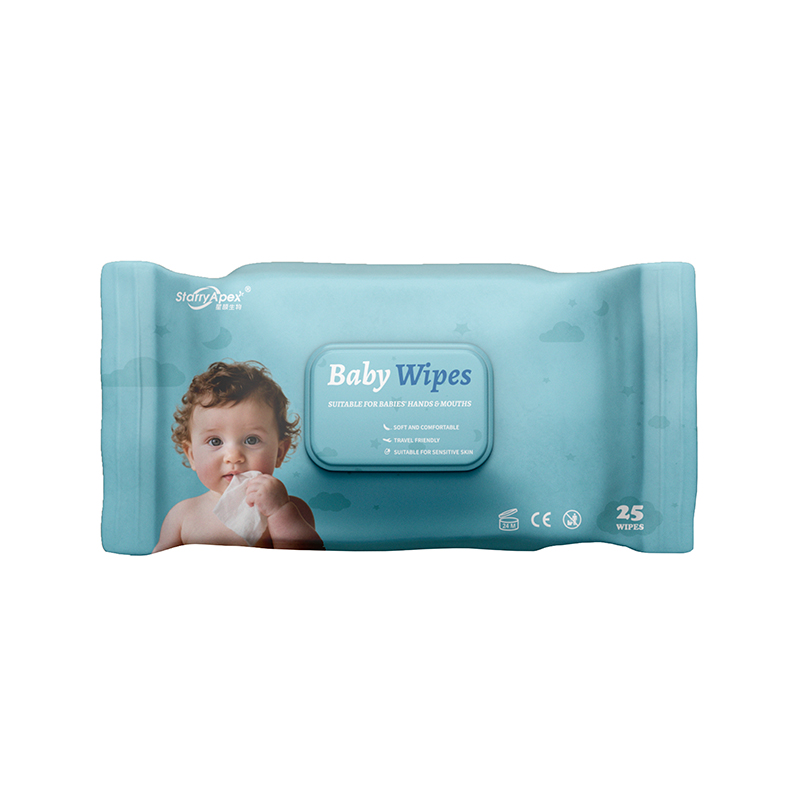Baby wipes are an essential item for parents, caregivers, and even adults who appreciate their convenience. Whether used for diaper changes, cleaning sticky hands, or wiping down surfaces, baby wipes offer versatility and ease. However, not all wipes are created equal. This guide will explore different types of baby wipes, their best uses, safety considerations, and eco-friendly alternatives.
Why Baby Wipes Are a Must-Have
Baby wipes are pre-moistened cloths designed for gentle cleaning. They are commonly used for:
- Diaper changes – Quick and hygienic cleanup.
- Feeding time messes – Wiping food off hands and faces.
- On-the-go cleaning – Sanitizing toys, high chairs, and strollers.
- First aid – Cleaning minor cuts and scrapes.
- Travel essentials – Freshening up during trips.
Because of their convenience, many households keep baby wipes stocked at all times.
Types of Baby Wipes
Not all baby wipes are the same. Understanding the differences can help you choose the best option for your needs.
| Type | Best For | Key Features |
| Standard Wipes | Everyday diaper changes and cleaning | Mild, hypoallergenic, lightly scented or unscented |
| Sensitive Skin Wipes | Babies with eczema or allergies | Fragrance-free, alcohol-free, extra gentle |
| Eco-Friendly Wipes | Environmentally conscious parents | Biodegradable, plant-based materials, plastic-free packaging |
| Antibacterial Wipes | Disinfecting surfaces and hands | Contains gentle antiseptic ingredients |
| Flushable Wipes | Convenience for quick disposal | Dissolves in water (but check local sewer guidelines) |
1. Standard Baby Wipes
These are the most common type, suitable for daily use. They are typically soft, lightly moistened, and safe for a baby’s delicate skin. Some may contain aloe or chamomile for added soothing effects.
2. Sensitive Skin Wipes
Babies with skin conditions like eczema or allergies need extra care. These wipes avoid harsh chemicals, fragrances, and alcohol to minimize irritation.
3. Eco-Friendly Wipes
Many parents are switching to biodegradable or compostable wipes to reduce environmental impact. These are often made from bamboo or other sustainable fibers.
4. Antibacterial Wipes
While not typically used for diaper changes, these are great for sanitizing hands and surfaces when soap and water aren’t available.
5. Flushable Wipes
Marketed as safe for toilets, these wipes break down more easily than standard wipes. However, many plumbing experts advise against flushing them, as they can still cause clogs.

Key Ingredients to Look For (and Avoid)
When selecting baby wipes, check the ingredients list to ensure they’re safe for your baby’s skin.
Safe & Beneficial Ingredients
- Water (Purified) – The best base for sensitive skin.
- Aloe Vera – Soothes and moisturizes.
- Chamomile Extract – Calms irritated skin.
- Vitamin E – Helps protect delicate skin.
Ingredients to Avoid
- Alcohol – Can dry out and irritate skin.
- Parabens & Phthalates – Potential hormone disruptors.
- Artificial Fragrances – May cause allergic reactions.
- Sodium Lauryl Sulfate (SLS) – Can be harsh on sensitive skin.
How to Choose the Best Baby Wipes
Here are some factors to consider when buying baby wipes:
- Skin Sensitivity – If your baby has rashes or allergies, opt for fragrance-free, hypoallergenic wipes.
- Thickness & Durability – Thicker wipes are less likely to tear during use.
- Moisture Level – Some wipes are overly wet, while others may be too dry.
- Packaging – Resealable packs prevent wipes from drying out.
- Eco-Friendliness – If sustainability is a priority, look for biodegradable options.
Alternative Uses for Baby Wipes
Beyond baby care, these wipes are handy for:
- Makeup removal – Gentle on the face.
- Quick cleanups – Spills, dust, or sticky surfaces.
- Pet care – Wiping paws after walks.
- Travel hygiene – Refreshing hands and face on the go.
Are Baby Wipes Safe for the Environment?
Traditional baby wipes often contain plastic fibers, making them non-biodegradable. If they’re flushed, they contribute to sewer blockages (known as “fatbergs”). To reduce environmental impact:
- Choose plant-based, biodegradable wipes.
- Dispose of wipes in the trash, not the toilet.
- Consider reusable cloth wipes for home use.
DIY Baby Wipes: A Cost-Effective Alternative
Making your own baby wipes can save money and reduce waste. Here’s a simple recipe:
Homemade Baby Wipes Recipe
Ingredients:
- 1 roll of thick paper towels (cut in half)
- 2 cups distilled water
- 1 tbsp baby wash (fragrance-free)
- 1 tbsp coconut oil (optional for moisture)
Instructions:
- Mix water, baby wash, and coconut oil in a bowl.
- Place half a paper towel roll in an airtight container.
- Pour the solution over the paper towels.
- Let it soak, then pull wipes from the center.
Common Baby Wipe Mistakes to Avoid
- Using wipes on broken skin – This can cause stinging or irritation.
- Over-wiping during diaper changes – Excessive wiping can lead to rashes.
- Flushing non-flushable wipes – Even “flushable” wipes can clog pipes.
- Storing wipes in extreme temperatures – Heat or cold can dry them out.
Final Thoughts
Baby wipes are a versatile and indispensable tool for parents. By choosing the right type—whether standard, sensitive, or eco-friendly—you can ensure safe and effective cleaning for your baby. Always check ingredients, avoid harmful chemicals, and consider sustainable options to minimize environmental impact.
Whether you’re a new parent or a seasoned caregiver, understanding the best practices for using baby wipes will help keep your little one comfortable and clean.


 English
English 日本語
日本語 Español
Español عربى
عربى Deutsch
Deutsch Français
Français Baby Wipes
Baby Wipes Industrial & Automotive Wipes
Industrial & Automotive Wipes Biodegradable Wipes
Biodegradable Wipes Cotton Buds and Pads
Cotton Buds and Pads

